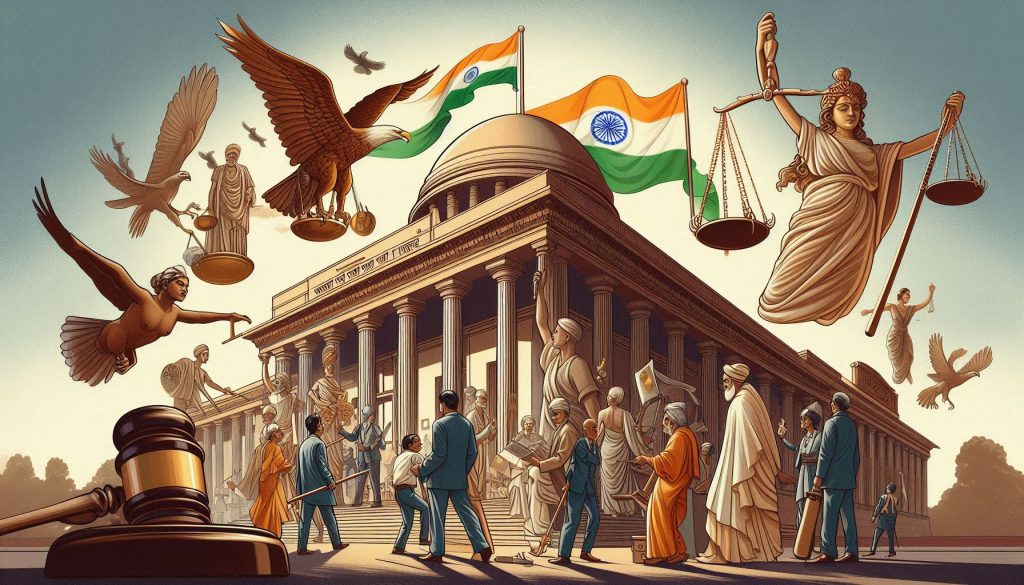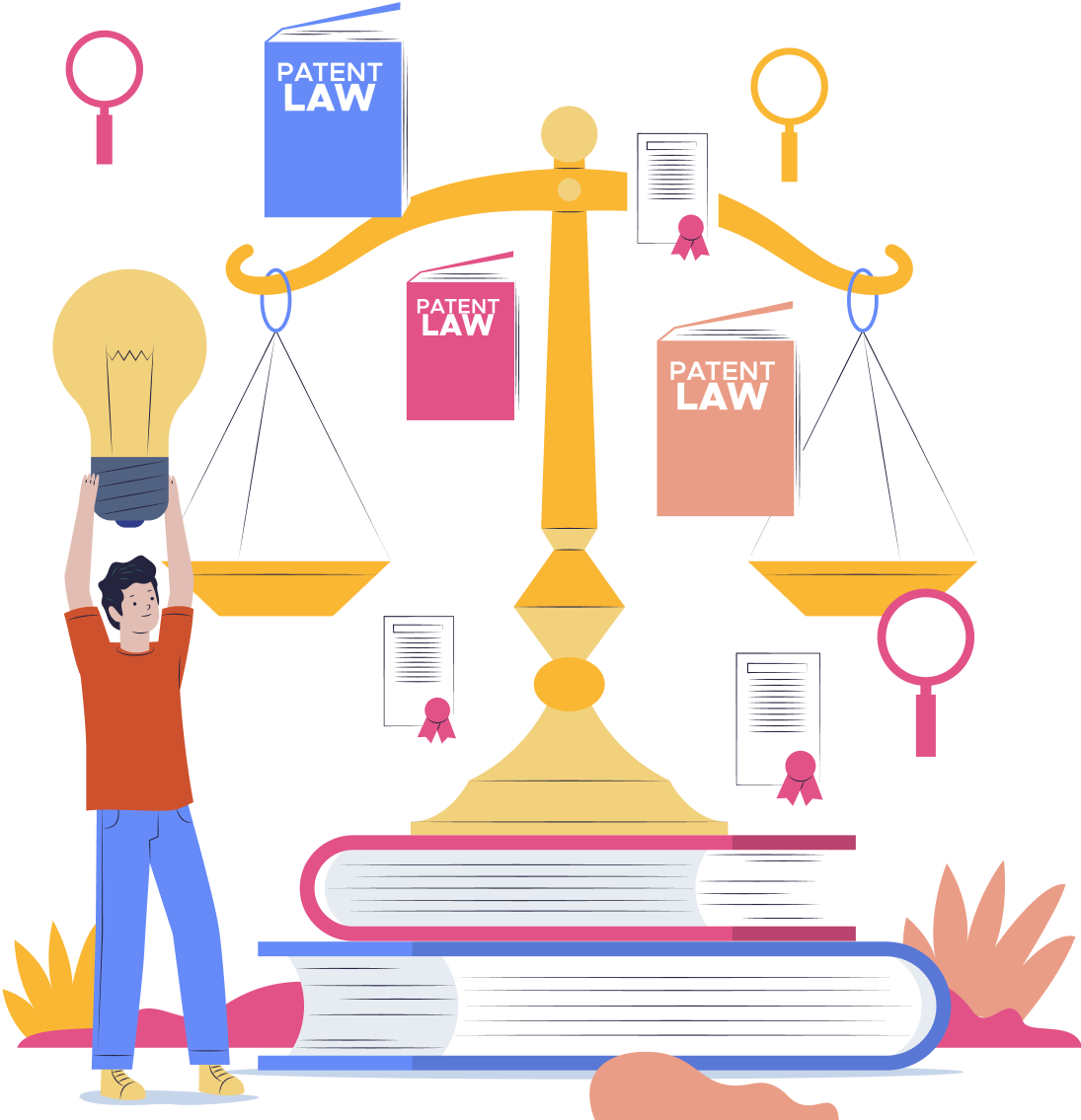Law and Social Justice – Complete Guide For Class 8 Civics Chapter 8

Welcome to iPrep, your Learning Super App. Our learning resources for the chapter, “Law and Social Justice” in Civics for Class 8th are designed to ensure that you grasp this concept with clarity and perfection. Whether you’re studying for an upcoming exam or strengthening your concepts, our engaging animated videos, practice questions and notes offer you the best of integrated learning with interesting explanations and examples.
The chapter ‘Law and Social Justice’ from the Class 8 civics NCERT book is pivotal for students as it delves into the crucial role laws play in maintaining social justice. The chapter ‘Law and Social Justice’ provides an overview of how laws are designed to protect workers, ensure safety, and uphold environmental standards. By exploring key points such as the value of labor, enforcement of safety laws, and new legislation for environmental protection, the chapter ‘Law and Social Justice’ underscores the importance of a fair and just society.
Objectives of the Chapter
Now that we understand the importance of studying this chapter, let’s explore the objectives behind ‘Law and Social Justice’
- To introduce students to the concept of social justice and the role of law in achieving it.
- It emphasizes the necessity of laws to protect vulnerable sections of society and to ensure that everyone gets a fair deal.
- This section aims to make students understand the value of labor and the conditions under which workers operate.
- It discusses issues like minimum wages, working conditions, and the exploitation of workers, highlighting the need for laws to protect their rights.
- To highlight the importance of enforcing safety laws to protect workers from hazardous conditions.
- It explains how laws are put in place to ensure that workplaces are safe and that employers are held accountable for any lapses in safety.
- To focus on the importance of environmental protection laws.
- To educate students about the need for legislation to prevent environmental degradation and to promote sustainable development.
Let’s now understand the various sections of the chapter in detail.
In order to understand the importance of legal protections for workers and the need for effective enforcement, let us delve into the introductory section of the chapter ‘Law and Social Justice’.
Introduction To Social Justice
In the chapter Law and Social Justice, there comes a significant introduction to the concept of social justice which is as follows-
- The Introductory section sets the stage by explaining the fundamental concept of social justice.
- It highlights the need for laws to protect the marginalized and ensure that society functions fairly.
- This section emphasizes that without laws, the powerful could exploit the weak, leading to gross injustices.
- Laws are essential to ensure that everyone, regardless of their social or economic status, is treated fairly and justly.
The introductory section in the chapter ‘Public Facilities’ covers several key points. Let’s now explore these in detail:
- Importance of Laws for Workers’ Wages:
Laws ensure that workers receive fair wages and are not exploited by employers. For example, the Minimum Wages Act mandates that workers must be paid no less than a specified minimum wage, which is periodically revised upwards.
- Protecting Workers, Producers, and Consumers:
Laws exist to safeguard the interests of workers, producers, and consumers. These laws aim to maintain a balance in market relations and prevent exploitation.
- Need for Enforcement:
The government must ensure that laws are effectively implemented. This includes regular inspections and penalties for violations to protect vulnerable workers from exploitation by powerful employers.
- Role of Fundamental Rights:
Many labor laws are rooted in the Fundamental Rights guaranteed by the Indian Constitution, such as the Right against Exploitation, which prohibits forced labor and child labor in hazardous conditions.
- Practical Implementation and Social Justice:
The chapter explores how these laws are applied in practice and evaluates their effectiveness in achieving social justice.
Now, in order to understand the exploitation and neglect faced by workers, let us delve into the ‘What is a Worker’s Worth?’ section of the chapter ‘Law and Social Justice’.
What is a Worker’s Worth?
Further in the chapter Law and Social Justice comes the understanding of what is worker’s worth. It involves-
- This section delves into the various aspects that determine a worker’s worth. It discusses the conditions under which workers often have to operate, including long hours, low pay, and unsafe working conditions.
- The section underscores the importance of laws like the Minimum Wages Act, which ensure that workers are paid fairly for their labor.
- It also highlights the role of trade unions and other worker organizations in advocating for better conditions and rights for workers.
The section ‘What is a Worker’s Worth?’ in the chapter ‘Public Facilities’ covers several key points. Let’s now explore these in detail:
- Reason for Foreign Companies Setting Up Plants in India:
Foreign companies like Union Carbide set up plants in India to take advantage of cheap labor, as wages in India are significantly lower than in developed countries, leading to higher profits.
- Cost-Cutting Through Lower Safety Standards:
Companies reduce costs by compromising on safety measures. For instance, the UC plant in Bhopal had malfunctioning safety devices and inadequate safety training compared to its plant in the U.S.
- Comparison of Safety Systems:
The UC plant in West Virginia had advanced safety systems and emergency plans, whereas the Bhopal plant relied on manual detection and lacked evacuation plans, highlighting the disparity in safety standards.
- Perceived Worth of Indian Workers:
Indian workers are seen as easily replaceable due to high unemployment, leading to a willingness to work in unsafe conditions. This perception contributes to neglecting workplace safety.
- Inadequate Compensation for Victims:
After the Bhopal disaster, compensation was low due to the perceived lower worth of Indian workers. Employers continue to exploit worker vulnerability, resulting in frequent workplace accidents.
Now, in order to understand the shortcomings in ensuring worker safety, let us delve into the ‘Enforcement of Safety Laws’ section of the chapter ‘Law and Social Justice’.
Enforcement of Safety Laws
Going further in the chapter Law and social justice comes the understanding of the enforcement of safety laws. This implies-
- The ‘Enforcement of Safety Laws’ section explains how laws are implemented to ensure that workplaces are safe for workers.
- It discusses the responsibilities of employers to provide a safe working environment and the role of government agencies in monitoring and enforcing these laws.
- The section also covers the consequences of failing to adhere to safety regulations, including penalties and legal actions.
- Real-life examples and case studies are often used to illustrate the importance of strict enforcement of safety laws.
The section ‘Enforcement of Safety Laws’ in the chapter ‘Public Facilities’ covers several key points. Let’s now explore these in detail:
- Government’s Role as Lawmaker and Enforcer:
The government is responsible for ensuring the implementation of safety laws and protecting the Right to Life under Article 21 of the Constitution.
- Lax Safety Laws in India:
Safety laws in India were inadequate and not stringent enough to prevent disasters like the Bhopal gas tragedy.
- Non-enforcement of Safety Laws:
Even the weak safety laws were not enforced, with government officials failing to recognize the UC plant as hazardous and allowing it to be set up in a populated area.
- Government’s Prioritization of Investment Over Safety:
The government prioritized the investment and job creation from the UC plant over the safety of the population, ignoring objections and safety violations.
- Inadequate Government Inspections:
Government inspectors continued to approve the plant’s procedures despite repeated incidents of gas leaks, indicating a failure to protect public safety.
- Need for Stronger Laws and Better Enforcement:
With the growth of industries in India, there is a critical need for stronger laws to protect workers’ rights and more effective enforcement of these laws.
Now, in order to understand the evolution of environmental laws and their significance, let us delve into the ‘New Laws to Protect the Environment’ section of the chapter ‘Law and Social Justice’.
New Laws to Protect the Environment
The chapter Law and Social Justice also covers New Laws to Protect the Environment. These involve-
- In this section, the focus shifts to environmental protection.
- It discusses various laws and regulations that have been enacted to prevent pollution, protect natural resources, and promote sustainable development.
- The section highlights the role of both government and citizens in protecting the environment.
- It explains how laws such as the Environment Protection Act and policies like the National Green Tribunal work to address environmental issues.
- The importance of public awareness and participation in environmental protection efforts is also emphasized.
The section ‘New Laws to Protect the Environment’ in the chapter ‘Public Facilities’ covers several key points. Let’s now explore these in detail:
- Lack of Environmental Laws and Enforcement in 1984:
In 1984, India had few environmental protection laws and minimal enforcement, allowing industries to pollute freely without restrictions.
- Environmental Pollution and Health Neglect:
Industries polluted rivers, air, and groundwater, disregarding the health of people and treating the environment as a ‘free’ entity.
- Bhopal Disaster Highlighted Environmental Issues:
The Bhopal disaster brought attention to environmental issues, affecting thousands of people and revealing gaps in existing laws that only protected workers, not the general public.
- Introduction of New Environmental Laws:
In response to pressure from environmental activists, the Indian government introduced new laws holding polluters accountable for environmental damage.
- Courts Upholding Environmental Rights:
The courts, including the Supreme Court, upheld the right to a healthy environment as part of the Fundamental Right to Life, as seen in the Subhash Kumar vs. State of Bihar case.
- Government’s Role in Environmental Protection:
The government is responsible for setting up laws and procedures to check pollution, clean rivers, and impose heavy fines on polluters.
Now that we have discussed the whole chapter, let us know the overall learning value of the chapter ‘Law and Social Justice’.
Overall Learning Value of the Chapter: The chapter ‘Law and Social Justice’ from the Class 8 civics NCERT book is an enlightening exploration of how laws contribute to a fair and just society. By understanding the worth of workers, the enforcement of safety laws, and the need for environmental protection, students gain valuable insights into the mechanisms that uphold social justice. This chapter highlights the vital role that laws play in ensuring that all members of society are treated fairly and that their rights are protected.
In conclusion, the chapter ‘Law and Social Justice’ for Class 8 Civics is a crucial lesson that provides students with a deep understanding of how laws contribute to maintaining fairness in society. It emphasizes the importance of protecting workers’ rights, ensuring safety in workplaces, and safeguarding the environment through legal frameworks. By studying ‘Law and Social Justice’, students gain insights into the vital role of laws in promoting equality and justice.
This chapter not only reinforces the value of legislation but also inspires young minds to understand the importance of a just society. As you explore the chapter ‘Law and Social Justice’, remember that laws are key to achieving social justice for everyone. With the iPrep Learning Super App, you have the perfect tools to master these essential concepts and prepare effectively for your academic journey.
Practice questions on Chapter 8 - Law and Social Justice
Get your free Chapter 8 - Law and Social Justice practice quiz of 20+ questions & detailed solutions
Practice Now








